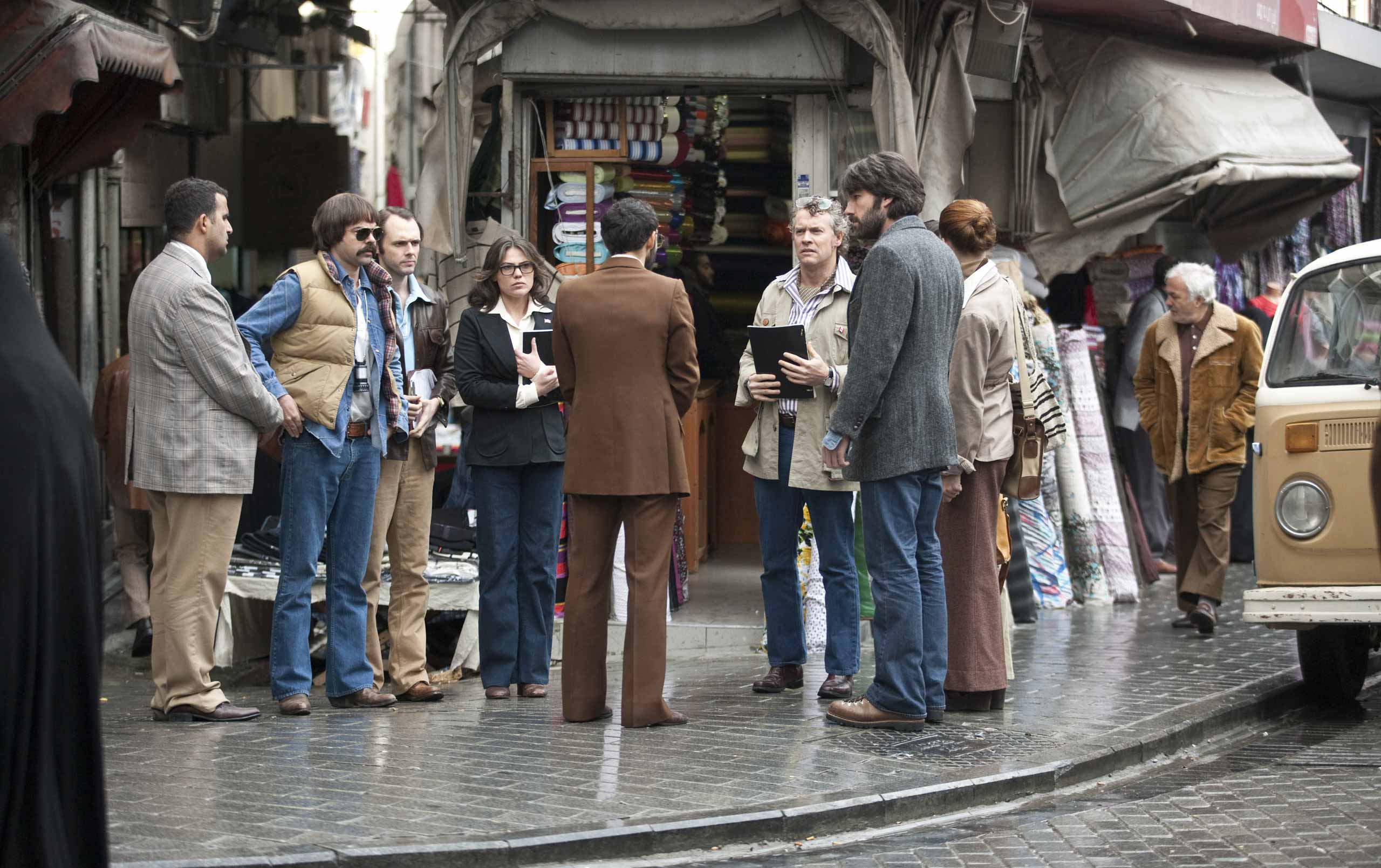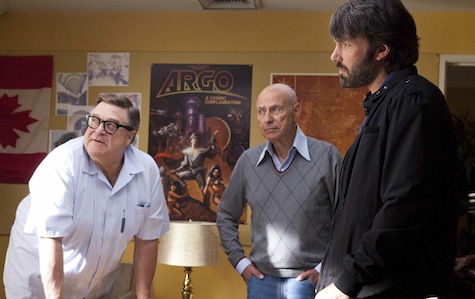On its most basic level, Argo is a tense spy film whose ludicrous premise is only redeemed by the fact that it’s 100% true: CIA agent Tony Mendez really did rescue six American diplomats from Iran during the Hostage Crisis by blustering in and out of the country pretending to be a producer for a science fiction movie that was never going to be made. The writing is sharp, the directing is tight, and the acting—from director/star Ben Affleck as Mendez down to the smallest cameo—is, across the board, fantastic. On that level alone the movie is great and you should go see it.
But beyond the basics, Argo is also complicated exploration of the power of fiction to on one hand tell a story, and on the other, shape reality. Both espionage and film making rely on telling complicated lies that people want to and need to believe, if only for a couple hours. (Except that people in the CIA can never take credit for what they’ve done, while Hollywood people will sue for their proper credit.)
As such, Argo wants the audience to be aware that it too is fiction (even if it’s based on truth). It opens with a history of 20th century Iran told in storyboards (as in, “if we were making a movie, this is how we would tell the story”) and ends with side by side comparisons of shots from the film and photos of the people, places, and events Affleck was trying to recreate. And recreate the period he does, using late ‘70s fashions and haircuts, a 50% lower film stock and enough shots borrowed from All the President’s Men to make Argo look like it was actually shot in 1980.
Affleck makes the audience aware of the unreality to make us question if what we are seeing is accurate in this and all films, even science fiction movies. After all, genre fiction has an unfortunate habit of taking real ethnicities, dressing them up as aliens, then getting conflict out of our (white) protagonists inability to deal with these strange beings (looking at you, Star Trek.) “Argo,” the movie within the movie, is rife with Orientalism, taking place on a desert planet, “Middle Eastern in feel,” with scenes at the bazaar, the palace, and on the dunes. We don’t see much of the film they are pretending to make—a few storyboards, some lines from a table reading—but it looks like a poorly-written and more racist version of Star Wars.
Orientalism is not a mistake the actual movie Argo makes. For a film in which a CIA agent is firmly positioned as the good guy, the Iranians are presented as diverse, humane, educated, and completely aware of a world outside their borders who have real grievances with the interference of American and British forces. Tehran is not an alien city at all, but a modern one that looks like Los Angeles from the air. Of course, the banality of the city makes the violence of the Revolutionary Guard all the more shocking, women eating Kentucky Fried Chicken are immediately contrasted with men hung from cranes.
Additionally, the Iranians are presented as storytellers in their own right. They have a Ministry of Culture that welcomes what they think is a Canadian film crew, hopes they make a romantic comedy about a foreign bride, and warns them off making crap about flying carpets and genies and such. Additionally, the student protestors holding the Americans hostage are explicitly called out as putting on a show for the cameras, and their demands for the return of the Shah and the mock executions they hold are intercut with the table reading of “Argo,” making the point that the Iranians have some control over their own narrative and how they are perceived. They are not only part of the world and aware of the world but they also have some control over the world.

That is why “Argo,” the fake movie, had to be a science fiction movie, and a bad one. The very cultural blindness that the real movie Argo eschews is what could believably lead a film crew to try to portray a country in the middle of an international crisis as an alien hellscape. A cheap Star Wars knock-off is exactly the movie that would be made in 1980, as Hollywood transitioned from gritty, realistic dramas, like Argo, to blockbuster spectacles, like “Argo.” And big budget action movies translate well in foreign markets.
The key scene, then, is at the end, when Joe Stafford (Scoot McNairy), one of the Americans being rescued, explains the movie they are making to the guards at the airport. He speaks to them in Farsi, uses the storyboards to illustrate the visuals, and tells a universal story of a father trying to save his son. The guards immediately get it and let the film crew pass, because this is a movie they want to see. By speaking to them in their language, Joe finds a common bond. Fiction has a way of bringing us together.
Of course, that scene never happened. The actual story of “Argo” is less exciting and more ridiculous. No one ever questioned the diplomats to that extent on leaving the country. They were simply accepted as Canadian filmmakers and the plan went off without a hitch. The success of the plan depended on just how ridiculous “Argo” really was. Barry Geller’s script, based on Roger Zelazny’s Lord of Light, was supposed to launch a franchise and theme park with designs by Jack Kirby, so that when Tony Mendez got a hold of it, he had so much production material to work with that no one would ever question that he was serious about making a movie. After all, those storyboards Joe shows the guard are supposedly drawn by the greatest comics artist that ever lived.
In this way, Argo cycles back and forth between truth and fiction: a made-up scene reveals shared humanity; a racist production is accepted by real Persians, because only a racist film would want to shoot in Iran at that time; the bigger the lie, the more easily it’s accepted. Argo is about the complicated fictional worlds that we create, and why we choose to believe in them, if only for a few hours. As Tony tells Joe, and as Joe proves, “my little story is the only thing between you and gun to your head.”
Steven Padnick is a freelance writer and editor. By day. You can find more of his writing and funny pictures at padnick.tumblr.com.










